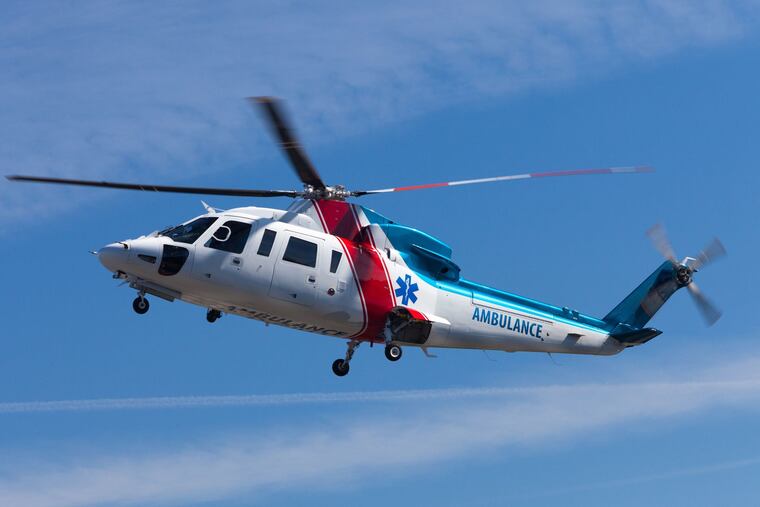Expensive air ambulance charges continue to rise, study finds
A study by Johns Hopkins researchers found charges for air ambulances are 4.1-9.5 times what Medicare pays, posing a serious concern for privately insured patients who receive such bills.

Air ambulances routinely charge nearly 10 times the rate Medicare pays and are commonly out of network for patients with private health insurance — a recipe for the ultimate surprise bill, according to a new report by Johns Hopkins University researchers.
Surprise bills occur when patients are treated by an out-of-network provider at an in-network facility — for example, if you saw an in-network doctor for a colonoscopy but the anesthesiologist assigned to your procedure was not part of the insurance network. In-network hospitals with emergency departments staffed by contracted doctors who do not have the same insurance agreements are another common source of surprise bills.
In most states, including Pennsylvania, out-of-network providers can bill patients directly for the full cost of the service or the remainder of a bill partially paid by their insurer.
Air ambulances are a prime offender when it comes to out-of-network bills. Air ambulance transports are reserved for the sickest, most urgent cases, when the nearest hospital is too far away or a patient needs to be transferred immediately from one hospital to another.
Cost varies depending on distance and company, but air ambulance companies charged an average of $36,000 for a helicopter transport and $40,000 for a fixed-wing airplane transport in 2016, according to a report released by the U.S. Government Accountability Office earlier this year.
Two-thirds of the bills sent to patients with private insurance were out-of-network.
“The air ambulance is the poster child for lack of consumer choice. No patient chooses an air ambulance,” said Ge Bai, an associate professor of accounting at the Johns Hopkins Carey Business School, and lead author of a new study about air ambulance charges.
Hopkins researchers used Medicare payment data from 2012 through 2016 to analyze provider charges and Medicare rates for air ambulance services.
They found that air ambulance charges were 4.1 to 9.5 times the rate Medicare paid.
Medicare payments for all types of services are well below what providers charge, but the gap is much bigger for air ambulances than most other services, according to the Hopkins study. Ground ambulances, for example, charge about 2.8 times what Medicare ultimately paid.
Charges increased 60 percent during the study period, from $24,000 to $39,000 in 2016.
Medicare paid a fraction of the charge price, typically less than $10,000, said Bai, who is also an associate professor of health policy and management at Hopkins.
The study did not look at the prices privately insured patients paid, but the findings are relevant to people with private health insurance. An air ambulance company’s charge is the same for all payers.
Many insurers will still pay part of an air ambulance bill, even if the company is out-of-network, but patients will likely receive the remainder of the bill.
Patients whose insurers refuse to pay for an out-of-network air ambulance will receive the full charge.
Air ambulance companies interviewed by GAO researchers said they often give discounts to patients based on their ability to pay. One said it offers a discount of up to 50 percent, in exchange for paying the remainder of the bill right away, according to the GAO report.
But half a $40,000 bill is still more than many people can afford.
A handful of states have taken steps to address surprise out-of-network bills. Last year, New Jersey passed legislation that requires an arbitration process for insurers and providers that holds patients harmless.
But there’s little states can do when it comes to surprise air ambulance bills because federal law prohibits states from regulating air carriers, which includes air ambulances.
Congress is batting around ideas for addressing surprise bills, but none include air ambulances. Last month, President Donald Trump issued an executive order calling on hospitals to release the rates they negotiate for services with private insurers, which won’t help patients facing pricey air ambulance bills, but is intended to give consumers more information about the cost of their care in general.
In the meantime, Bai said, patients’ only options are to try negotiating a lower rate with the air ambulance company — or declare bankruptcy.
Have you received an out-of-network air ambulance bill? If you are interested in sharing your experience, complete the form below or email reporter Sarah Gantz at sgantz@inquirer.com